Pain is one of the most complicated and interesting topics in modern healthcare because of the unique blend of biology, neurology, and psychology behind it. No matter what condition an individual is dealing with, their pain experience is going to be inherently different. It is nearly impossible for us as healthcare providers to compare one individual’s pain levels to another because we are always working off a different scale.
Being in pain can be frustrating and scary, so here are 5 things you need to know about your pain
1. Your Pain is real
One of the most frustrating occurrences for a patient is going to see a doctor, being given a physical exam and imaging only to be told: “there is nothing wrong with you”. Just because there are no or very few objective findings associated with your pain does not mean that it is not real. The experience of pain is a biological, neurological and psychological experience.
For example, you may sit and watch a funny movie and forget about your back pain but while you are stressed at work your back pain flares up. Even if all variables are the same, just the fact that you are in a stressful environment increases your lower back pain. Do not ever let a medical professional or otherwise convince your that your pain “is not real” and you need to somehow just convince yourself to be pain-free. Central and Affective pain are very real and require unique treatment plans of their own.
2. Your Pain is a message from your body
When you remain in a static postural position or perform a movement and feel pain in your body, it is your body’s way of sending you a message that the particular activity your are performing does not feel safe. There are numerous reasons why the body sends a painful message including improper joint alignment, injury to soft tissue and moving outside of your controllable range of motion. Your body’s job is to protect you from serious injury. However, this does not mean that pain always means to avoid a particular movement (see the video in #5 for details).
Feeling pain does not necessarily equate to a serious structural injury, even an activity such as sitting in a static posture may cause pain after a few hours, which is your body’s way of saying “Time to stand up and move your joints”. The body doesn’t like sustained postures or doing activities beyond its capabilities. If you are unable to lift your shoulder over your head normally, then your body will send you a pain signal if you try to do so with a barbell. This is protective!
3. You can control your pain better than you think
Every Painful Condition has behaviors. For example, certain conditions have constant pain, others are intermittent, some respond well to NSAIDs, while others respond to movement. As pain medicine clinicians, our first take when we see a patient is to first understand their goals and then do figure out the behaviors of conditions. If we know what times of day conditions act up, which movements are pain, and which postures are relieving, we are able to not only narrow down an effective treatment plan but also closely control the symptoms.
If your pain is intermittent (meaning that there are certain times it is painful and others it is not) then you are able to control your pain. For example, if sitting causes you lower back pain, then you are able to work standing or take frequent micro-breaks to offset the hours of sitting. Additionally, we know from the medical literature that symptoms that are intermittent and activity dependant are much more likely to be resolved quickly and conservatively than those that are constant because we are able to control when and where symptoms occur.
4. Your diagnosis does not tell the story
Diagnoses such as “Arthritis”, “Disc Herniation”, and a number of soft tissue injuries can be very disheartening to hear and if not accompanied by proper education on the part of your clinician, can lead to a life of disability. The truth of many of these diagnoses is that they are a normal part of aging and being active. Of course, this doesn’t mean to simply ignore your diagnosis or MRI, but there are many individuals with arthritis, disc herniations, rotator cuff tears and meniscus tears that are completely asymptomatic and have had these conditions for years.
Because in some cases the diagnosis or finding on imaging may be irrelevant or may have been present long before you felt symptoms, it is a better assessment to look at movement and symptom baselines. For example, the ability of your shoulder to function during work, activities of daily living and exercise are a better indicator of shoulder health than what you MRI says. When you are being assessed for a musculoskeletal injury, we advise that you see a conservative care physician first to see if your injury is manageable without the use of invasive surgery or medication.
5. You can stay active even when in pain
If you are currently dealing with pain and want a thorough assessment and a treatment plan specifically tailored to you, please give us a call or book online. We are here to help!
Call Us
[/vc_column_text]schedule appointment nowschedule appointment now
Disclaimer: If you are in pain, please get a thorough assessment from a chiropractor or medical doctor! These tips are not designed to replace a visit to the doctor, but rather to be educational.

